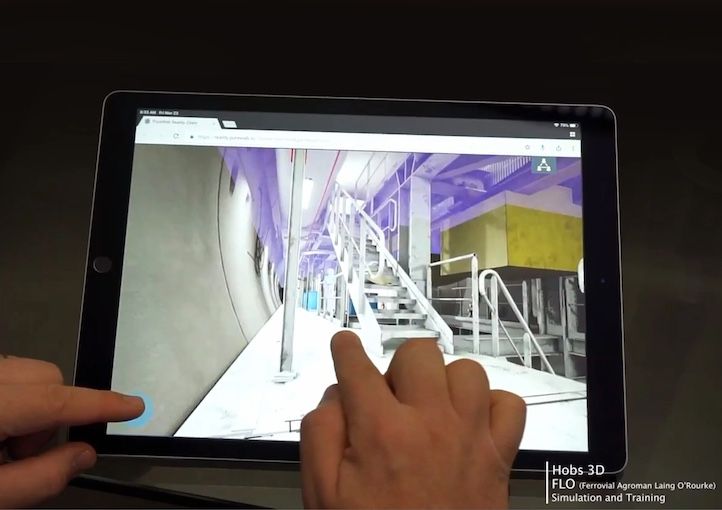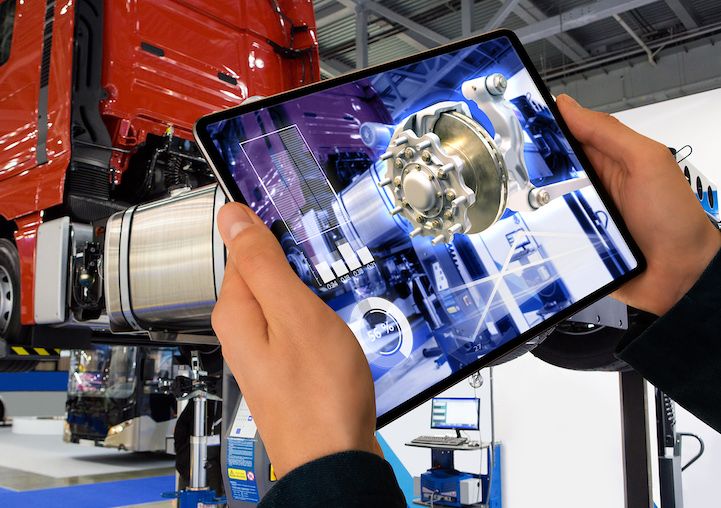How Companies Can Deliver Real-Time 3D Training Simulations to Any Mobile Device

The global mobile population today consists of over 4 billion unique users, and the bring-your-own-device (BYOB) market is expected to hit $367 billion by 2022.
In short, a significant portion of the modern workforce is using its personal devices for both work and play. As a result, companies are taking the following steps to create mobile, interactive 3D training experiences for their employees.
Working with creative agencies that use game engines to create real-time 3D content
Training and development teams are working with creative visualization agencies to turn their classroom and simulator training into interactive 3D experiences. Game engines like Unity and Unreal Engine provide content agencies an all-in-one tool for audio, graphics, and physics features to create a realistic 3D experience.
When CAE Healthcare wanted to create training simulators for its technicians it used Unity to create CAE Vimedix, a high-fidelity simulator designed to teach technicians how to perform cardiac, lung, abdominal, and OB/GYN ultrasounds. The Unity-designed graphics created the AR component of the manikin-based system, empowering technicians-in-training to practice ultrasound probe handling, making diagnoses, and more.
Embracing real-time 3D streaming as an alternative to VR and training simulators
The go-to options for interactive 3D training are in-class simulators and VR workstations or headsets. Neither of these options are incredibly mobile. On the other hand, interactive 3D streaming allows employees to obtain a 360-degree view of a photorealistic object or scene. Trainees can use their screen or mousepad to manipulate the image, examine it from different angles, and study how to manage it for when they use it in the real world.
Related Read: Does photo-real 3D for business need VR or real-time mobile access?
Consider the case of Pacific Gas & Electric (PG&E) and the GE Becker VRP-600-CH Pilot, an important valve control tool in the natural gas industry. Every 5 years, technicians take the machine apart for preventive maintenance. PG&E wanted to do something about the high error rates, expensive training costs, and a higher volume of support calls during re-builds of this machinery.
To do this, it hired an agency to create an interactive 3D training simulation. The simulation would allow technicians to practice every step of the complicated process before they were ever in the field. These interactive sessions included every detail, down to selecting the right tool at each step.
Providing this kind of frequent training in a classroom environment would be unsustainable. With an interactive 3D session streamed to any device, employees could practice over and over again on their own time.
As a result, job time and other costs were slashed by 62 percent. In addition, rework was reduced by 37 percent. Training times were cut in half and employees were grateful for a user-friendly alternative to confusing training manuals.
Integrating interactive 3D training modules into learning management systems
Approximately 85 percent of companies have a learning management system (LMS) for their employees. Some companies offer curated materials and helpful learning paths for motivated employees while other companies use their LMS as a dumping ground for educational content.
This presents an opportunity for employers to make their interactive 3D sessions easily accessible to employees. Most LMS are designed to be accessible both by desktop or smartphone. Companies eager to deliver training to as many employees as possible provide these tools through their learning management systems.
Providing interactive 3D training through learning management systems also ensures employees get an integrated experience. Learning management systems often contain gamification features that encourage employees to continue checking in, whether it’s through badges, leaderboards, or learning streaks where employees can see how many days in a row they’ve participated in educational content.
Working with a fully managed platform to deploy their real-time 3D models
There are a number of methods for companies to deploy their interactive 3D content including WebGL and AppStream. But for enterprises who have neither the time nor the team to focus on cloud management, a fully-managed 3D streaming platform is essential.
Read Next: Understanding cloud usage costs when streaming interactive 3D
Why is a fully-managed solution the right approach? With a fully managed solution, enterprises benefit from a secure, high quality way to reliably distribute their content. A provider like PureWeb takes responsibility for:
- Choosing a cloud computing provider
- Carrying out the necessary configurations
- Ensuring your data pipeline is secure
- Integrating the 3D modules with your LMS
- Distributing your training content to employee devices through the cloud
Just as you don’t deal directly with your utility providers, PureWeb’s service ensures you don’t deal with the nuts and bolts of managing a cloud streaming platform.
Specifically, this means PureWeb:
- Configures your chosen cloud solution (e.g. AWS, Azure)
- Handles the coordination of streaming session connections
- Schedules training user sessions to available servers
- Orchestrates the dynamic scaling of servers to meet user demand
- Finds a suitable streaming application or protocol that prioritizes security and protects your proprietary data
- Interested in learning more about how companies are making their interactive experiences mobile and accessible. Download our latest white paper n the cloud
- Manages security and authentication, system monitoring and logging, fault tolerance, and more
Running a reliable, enterprise-grade solution takes more than firing up a few servers in the cloud. It requires a dedicated team of people, with experience in the space, who can manage the technical details beneath the hood while you focus on designing accurate training modules.
Interested in learning more about how companies are making their interactive experiences mobile and accessible. Download our latest white paper How real-time 3D simulators supercharge online training for a mobile workforce.


